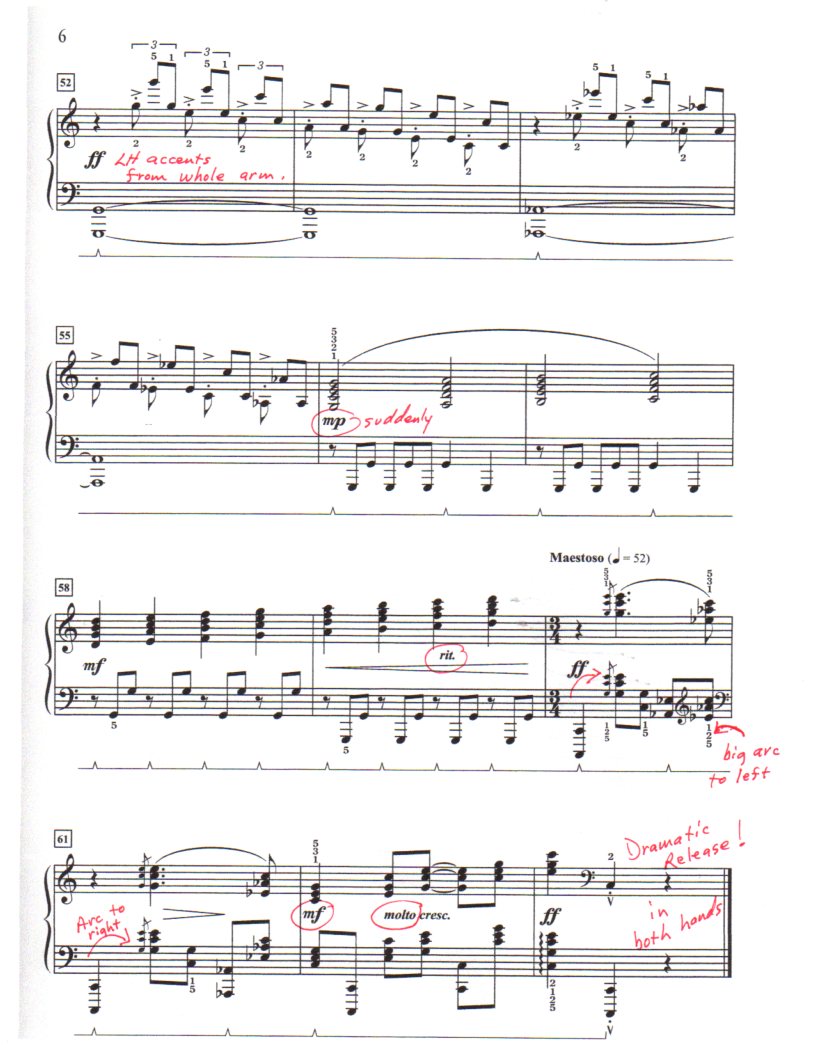Winter Rhapsody - Late Intermediate Level Solo

'Winter Rhapsody', a late intermediate piano solo, was commissioned by the Washington StateUniversity (Pullman) piano pedagogy lab school in 2008. It is a dramatic 'showpiece' for this level and a solo that is most gratifying to learn and perform. It is full of patterns that lie well inthe hand and sounds harder than it actually is, which always serves as a greatmotivator for students at this level.
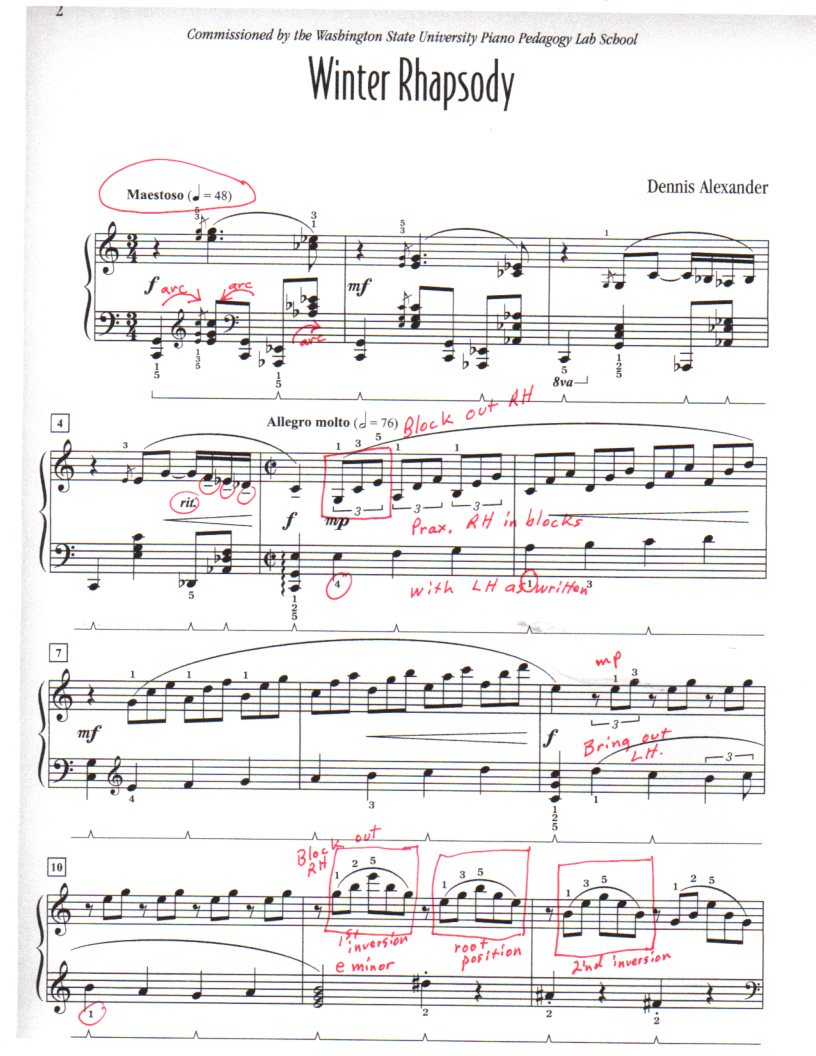
The opening measures, marked maestoso, set up a dramatic and suspenseful mood. The left hand needs to provide full,rich sounds-- keep those wrists nice and relaxed here to help create abeautiful, deep tone. Openinggestures need to be both slow and dramatic! Have your student practice that LH alone, with nice big arcswhen moving from register to register. Be sure to observe the rit. in ms. 4 along with the crescendo into the allegromolto section. I would suggest anticipating the LH rolled chord, andplay the top note (e) of this chord with the RH 'c' on beat one.
This next section is such fun to practice and play! Ask your student to block out allthe triplets in the RH-- you'll notice that they are all 2ndinversion triads on white keys, so this will lie beautifully in the hand. Practice the blocks with therising LH scale HT, and this will feel easy at a fast tempo when played aswritten. Pace this longcrescendo carefully so that the climax is reached at ms. 9. Bring out the LH melody line overthe triplet patterns and then play hands equally in the descending cascade ofsound in mss. 11-12. These barsshould also be blocked out in the RH so the student realizes that it's nothingbut E-minor triads in all inversions. This pattern is then repeated, but the 2ndtime the RH descending triads are in Eb- minor.
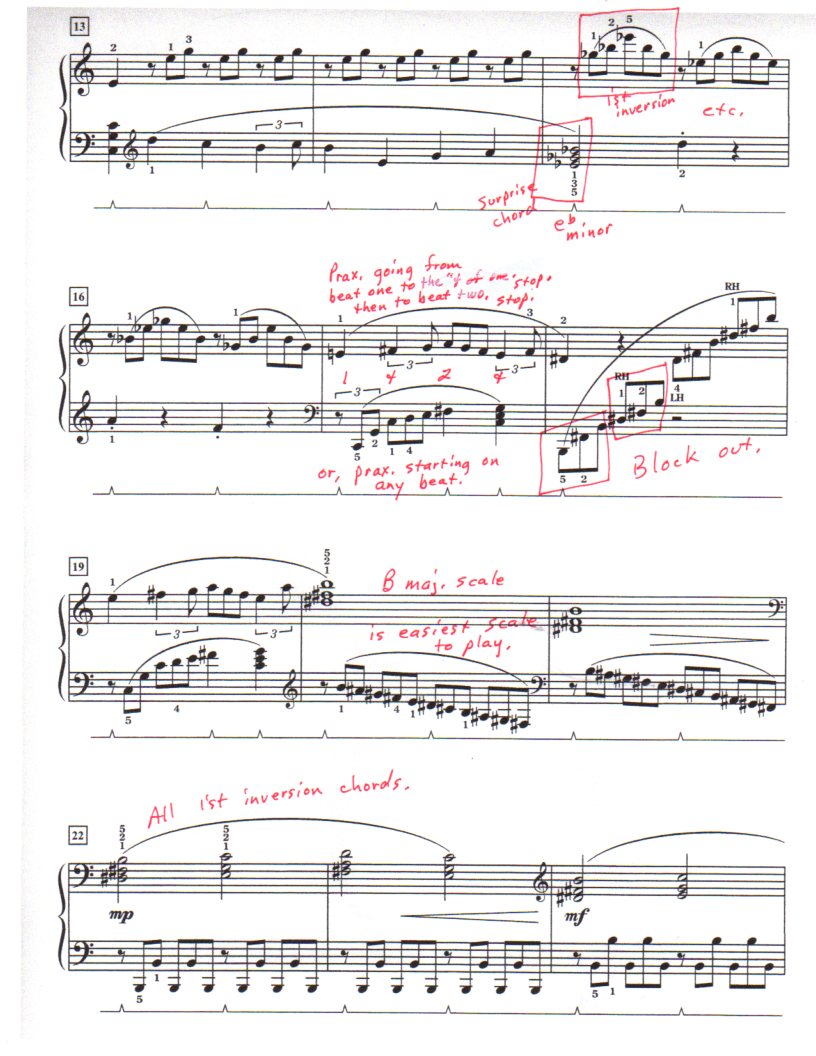
ms. 17 can be somewhat tricky in getting a perfect 'ensemble' between the hands. Practice this measure in short groups, going from beat 1 to the 'and' of one, then go from beat 1 to beat 2 (we're in cut time, don't forget!). Work through the rest of the measure the same way. Also, try starting on the 'and' of one and go to beat 2 and stop. Then start on the 'and' of two and go across the measure to beat 1, striving for perfect accuracy on that big LH leap.ms. 18 can be blocked out for ease in execution. If ms. 17 is practiced well, ms. 19 is already learned! The easiest scale to play on the piano is B major, so this descending B major scale in the LH should feel great (provided your student is using the correct fingering!). Mss. 22-27 are easy to learn, with the 1st inversion triads being very consistent in the RH.
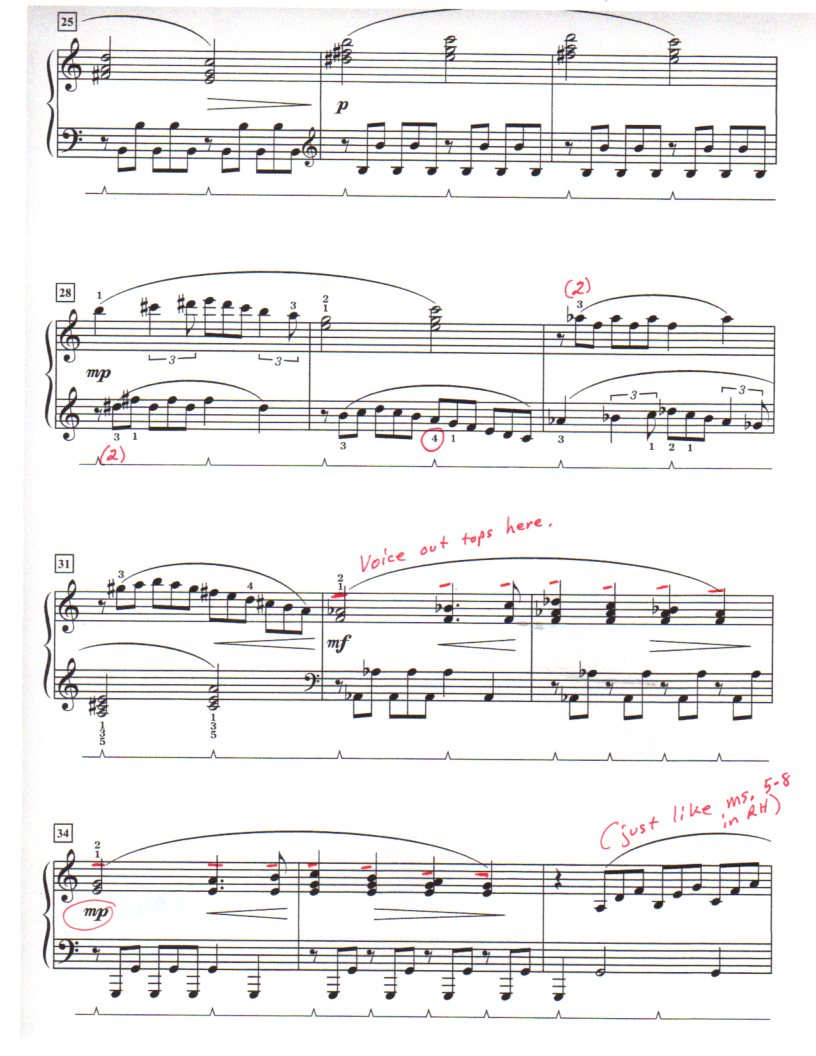
I actually feel that mss. 28-31 are some of the trickiest measures in this piece, as the texture is thin and the coordination can be tricky at a fast tempo. The LH needs to feel loose and free-- practice with a nice rotation in the wrist, and 'pulse' this pattern to beat 2 of every measure.
Again, practice in short spurts, adding one short group at a time. In mss. 32-35, work to voice out the tops of these RH chords so that the melody line is very singing and shaped at the same time. Ms. 36 takes us right back to the opening 'allegro molto' which has already been learned. Take a little time to 'breathe' at the end of ms. 39, and then 'place' that LH top note of the rolled chord to give this a tempo section a good, secure foundation.
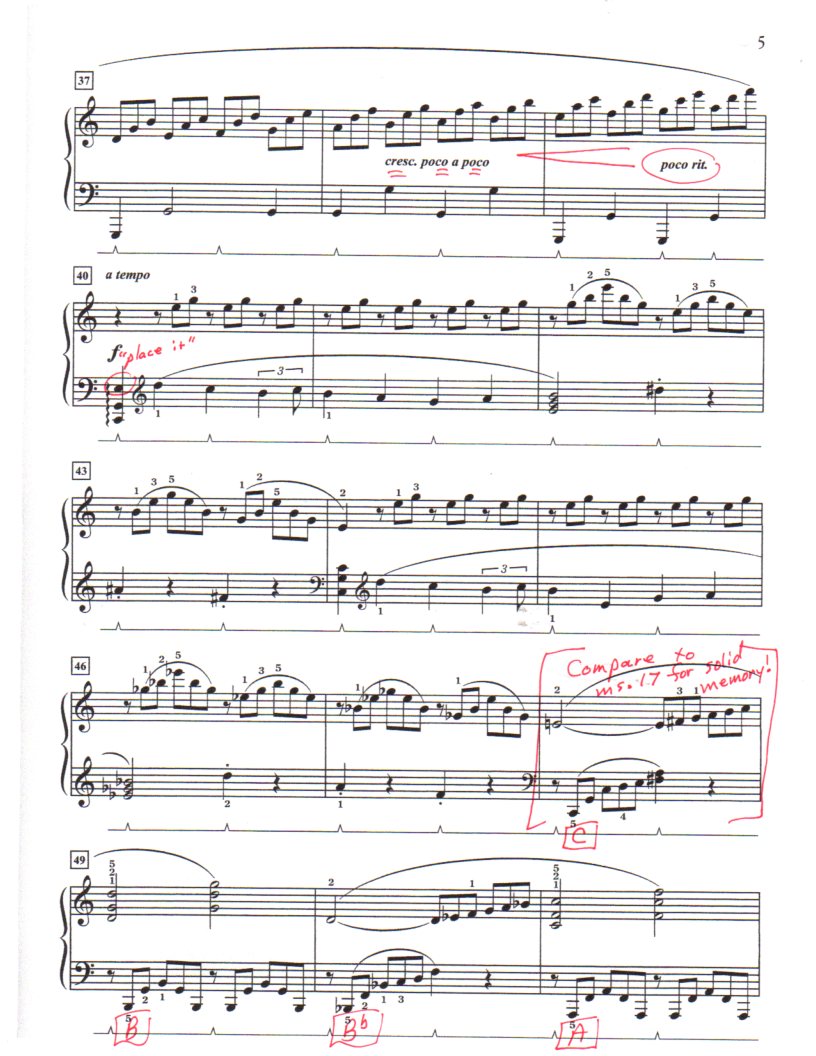
The recapitulation is exactly like the opening, but makesure your student is very aware of the change in ms. 48. Get this measure solidly intoyour head, and compare it to ms. 17 so that no mishaps occur in actualperformance. In ms. 52, give all of the LH eighthnotes a nice 'ping' from the whole arm.These bars need to sound as powerful as possible, so create a bigdramatic sound from the whole arm.This last page can be most effective when dynamics areexaggerated-- be sure to come down to 'mp' suddenly in ms. 56 and thenbuild the sound into the dramatic 'maestoso' in ms. 60. Again, big arcs in the LHwith a molto crescendo in those last twobars. Release the pedal right withthe hands on the last chord, with a dramatic release in both hands!

